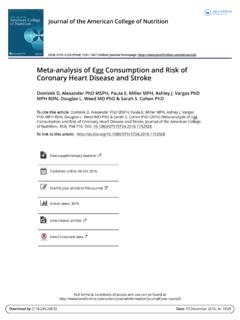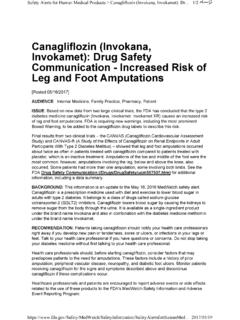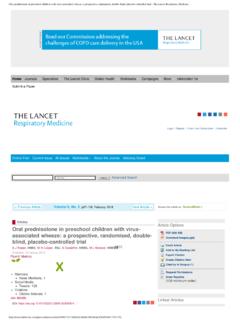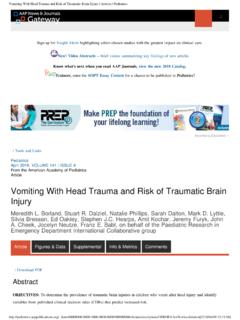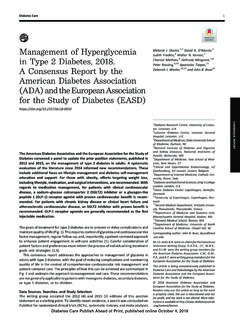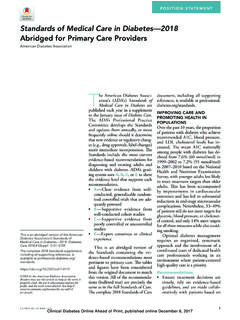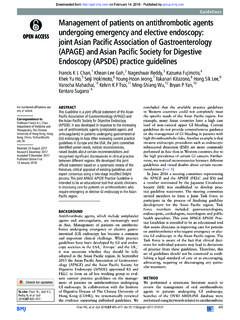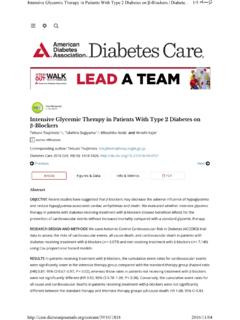Transcription of double-blind, placebo-controlled trial
1 Two-step egg introduction for prevention of egg allergy in high-risk infants with eczema (PETIT): a randomised, double - blind , placebo - controlled trial - The (16)31418-0/fulltext[2016/12/13 22:18:58] Login | SubscribeArticlesTwo-step egg introduction for prevention of egg allergyin high-risk infants with eczema (PETIT): a randomised, double - blind , placebo - controlled trial , , , ,, , , , , , , , , ,, for the PETIT Study TeamContributed equallyA complete list of PETIT Study Team members is provided in the appendixArticle OptionsPDF (997 KB)Download Images(.ppt)Email ArticleAdd to My Reading ListExport CitationCreate Citation AlertCited by in Scopus (0)Linked Articles All Content Search Advanced Search| Register Online FirstCurrent IssueAll IssuesSpecial IssuesMultimediaInformation for AuthorsOnline First< Previous ArticleNext Article >Osamu Natsume, MD*Shigenori Kabashima, MD*Junko Nakazato, MDKiwako Yamamoto-Hanada, MDMasami Narita, MDMai Kondo, MDMayako Saito, MDAi Kishino, MDTetsuya Takimoto, MDEisukeInoue, PhDJulian Tang, PhDProf Hiroshi Kido, MDProf Gary W K Wong, MDKenji Matsumoto, MDHirohisa Saito, MDDr Yukihiro Ohya, MD * Access this article on ScienceDirectHomeJournalsSpecialtiesThe Lancet ClinicGlobal HealthMultimediaCampaignsMoreInformation forSubmit a PaperTwo-step egg introduction for prevention of egg allergy in high-risk infants with eczema (PETIT).
2 A randomised, double - blind , placebo - controlled trial - The (16)31418-0/fulltext[2016/12/13 22:18:58]DOI: (16)31418-0 |Published: 08 December 2016 Article InfoSummaryFull TextTables and FiguresReferencesSupplementary MaterialSummaryBackgroundEvidence is accumulating that early consumption is more beneficial than is delayedintroduction as a strategy for primary prevention of food allergy. However, allergic reactionscaused by early introduction of such solid foods have been a problematic issue. Weinvestigated whether or not early stepwise introduction of eggs to infants with eczemacombined with optimal eczema treatment would prevent egg allergy at 1 year of this randomised, double - blind , placebo - controlled trial , we enrolled infants 4 5 months ofage with eczema from two centres in Japan. Exclusion criteria were being born before 37weeks of gestational age, experience of ingestion of hen's eggs or egg products, history ofimmediate allergic reaction to hen's eggs, history of non-immediate allergic reaction to aparticular type of food, and complications of any severe disease.
3 Infants were randomlyassigned (block size of four; stratified by institution and sex) to early introduction of egg orplacebo (1:1). Participants in the egg group consumed orally 50 mg of heated egg powder perday from 6 months to 9 months of age and 250 mg per day thereafter until 12 months of aggressively treated participants' eczema at entry and maintained control withoutexacerbations throughout the intervention period. Participants and physicians were masked toassignment, and allocation was concealed. The primary outcome was the proportion ofparticipants with hen's egg allergy confirmed by open oral food challenges at 12 months ofage, assessed blindly by standardised methods, in all randomly allocated participants whoreceived the intervention. This trial is registered with the University Hospital MedicalInformation Network Clinical Trials Registry, number Sept 18, 2012, and Feb 13, 2015, we randomly allocated 147 participants (73 [50%]to the egg group and 74 [50%] to the placebo group).
4 This trial was terminated on the basis ofthe results of the scheduled interim analysis of 100 participants, which showed a significantdifference between the two groups (four [9%] of 47 participants had an egg allergy in the egggroup vs 18 [38%] of 47 in the placebo group; risk ratio 0 222 [95% CI 0 081 0 607];p=0 0012). In the primary analysis population, five (8%) of 60 participants had an egg allergyin the egg group compared with 23 (38%) of 61 in the placebo group (risk ratio 0 221 [0 090 0 543]; p=0 0001). The only difference in adverse events between groups was admissions tohospital (six [10%] of 60 in the egg group vs none in the placebo group; p=0 022). 19 acuteevents occurred in nine (15%) participants in the egg group versus 14 events in 11 (18%)participants in the placebo group after intake of the trial of heated egg in a stepwise manner along with aggressive eczema treatment is asafe and efficacious way to prevent hen's egg allergy in high-risk infants.
5 In this study, wedeveloped a practical approach to overcome the second wave of the allergic epidemic causedby food of Health, Labour and Welfare, and National Centre for Child Health andDevelopment, ArticlesMost Read Most CitedMost read in The Lancet within the past30 Lancet ChoiceThe Lancet Choice is a new paymentTo read this article in full you will need to make a paymentCOMMENTA nother step towards prevention offood allergyEDITORIALP resident TrumpVol. 388, No. 10059 Published: November 19, 2016 ARTICLESW orldwide trends in blood pressurefrom 1975 to 2015: a pooledanalysis of 1479 population-basedmeasurement studies with 19 1million participantsPublished: November 15, 2016 Open AccessREVIEWI nterpretation of the evidence for theefficacy and safety of statin therapyVol. 388, No. 10059 Published: September 8, 2016 ARTICLESM easuring the health-relatedSustainable Development Goals in188 countries: a baseline analysisfrom the Global Burden of DiseaseStudy 2015 Vol.
6 388, No. 10053 Published: September 21, 2016 Open AccessARTICLESS creening and brief intervention forobesity in primary care: a parallel,two-arm, randomised trialVol. 388, No. 10059 Published: October 24, 2016 Open AccessTwo-step egg introduction for prevention of egg allergy in high-risk infants with eczema (PETIT): a randomised, double - blind , placebo - controlled trial - The (16)31418-0/fulltext[2016/12/13 22:18:58]option that gives you the freedom andflexibility to access any 5 premium articlesof your choice from across The Lancetfamily of journals - all for a one-off paymentof $ purchase your Lancet Choice passfrom the Summary or Full Text page of anarticle you wish to access. This will countas the first of 5 article credits, or Allowances , and you can use your 4remaining Allowances to access otherarticles from any of The Lancet out more about The Lancet ChoiceThe Lancet JournalsThe LancetThe Lancet Diabetes &EndocrinologyThe Lancet Gastroenterology &HepatologyThe Lancet Global HealthThe Lancet HaematologyThe Lancet HIVThe Lancet Infectious DiseasesThe Lancet NeurologyThe Lancet OncologyThe Lancet PsychiatryThe Lancet Public HealthThe Lancet Respiratory MedicineEBioMedicineInformation & SupportAbout UsInformation for AuthorsInformation for ReadersThe Lancet CareersCustomer ServiceContact UsPrivacy PolicyTerms and ConditionsSubscriptionYour AccountSubscription OptionsExisting Print SubscribersCopyright 2016 Elsevier Limited except certain content provided by third Lancet is a trade mark of RELX Intellectual Properties SA.
7 Used under website is operated by Elsevier Inc. The content on this site is intended for health are set by this site. To decline them or learn more, visit our Cookies registered? Please a new accountThe Lancet ChoiceAccess any 5 articles from TheLancet family of journalsFull text and PDF access to 5paywall articles of your choiceValid for 365 days from date ofpurchaseFind out more about The LancetChoicePayment OptionsPurchase this article for $ access for 24 hoursPDF version can be downloadedas your permanent recordSubscribe to The LancetPurchase a subscription to gainaccess to this and all other articles inthis include:Personal online only subscriptionInstitutional Access to see if you haveaccess via your a print subscriber?Claim online accessHave a free trial code?Activate your free trialEmail/Username: Password: Remember me Forgot password?
8 Visit ScienceDirect
